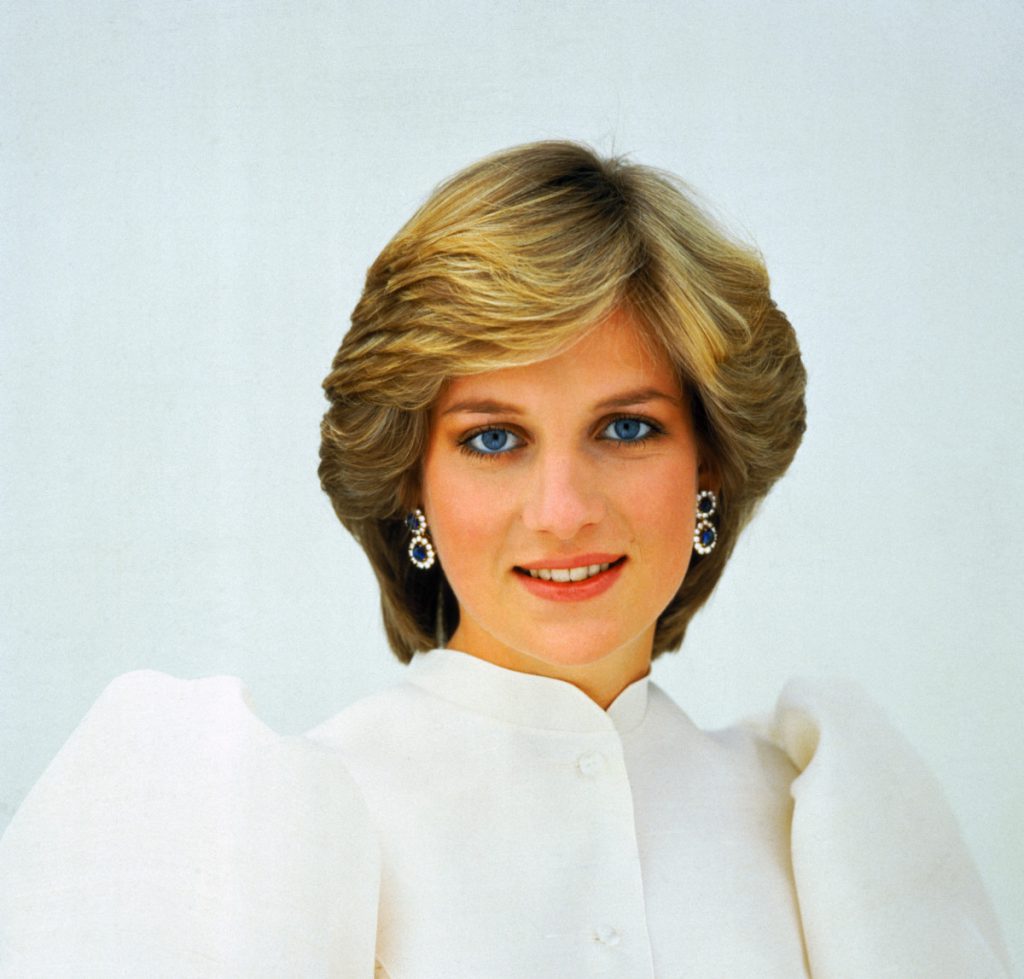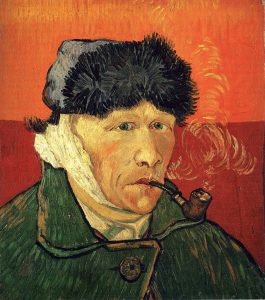Winner of the Fall 2019 StMU History Media Award for
Best Article in the Category of “People”
Two million people are cheering her name, 750 million eyes are upon her. She’s smoothing out her silk, ivory colored wedding dress embroidered with pearls and mother-of-pearl sequins. She is being transported to St. Paul’s Cathedral by five military police officers in a fairytale-like coach. Keeping her composure, she steps out of the stagecoach in her Cinderella-like wedding slippers. She walks up the steps of the Cathedral, head held high, the Spencer family tiara decorating her gorgeous short, blonde hair. As she enters the dome, all eyes are drawn to her glowing, innocent features and the twenty-five-foot train trailing behind; the opening song is played by one of the three orchestras that her fiancé has chosen. The date is July 29, 1981, marking the wedding of Prince Charles to Lady Diana. Diana knew that becoming Princess of Wales was going to be a great responsibility, one that couldn’t be taken lightly. She strongly believed it was either going to be a fairy-tale dream come true or a total nightmare; either way, it was too late that day for her to change her mind.1

Charles was absent for a lot of the first year of their marriage: he tended to his royal duties, participated in shooting, polo, and painting pictures. He lived a comfortable, no strings attached life with Diana that first year. Once, he even admitted to his past liaisons with some married women. They were deemed a “safer choice” because they would keep quiet—due to having families and husbands. Charles assumed Diana would fit perfectly into his lifestyle like a missing puzzle piece. This was not the case, as Diana and he had very different forms of entertainment and pastimes; there was also a rather large age gap of fourteen years.3 During their engagement, when Diana was nineteen and Charles was thirty-three, Prince Charles received a package. Diana, already suspecting Charles was hiding something, found a gold bracelet addressed to ex-lover Camila Parker-Bowles with the initials “F” and “G” intertwined; the initials were of the nicknames they had given to each other.4 “This was about two weeks before we got married…. So rage, rage, rage! ‘Why can’t you be honest with me?’ But, no, [Prince Charles] cut me absolutely dead.”5 Charles denied the accusations, making her feel paranoid and leaving her with second thoughts about marriage. Diana claimed she had considered canceling the wedding, discussing the situation with her two sisters, both responding with “your face is on the tea-towels so you’re too late to chicken out now.”6

The public viewed the wedding with a lot of admiration, so much that it blindsided them. The public was completely unaware that Diana could not handle the public scrutiny; her face was on every magazine cover and she was all the media talked about. Princess Diana was portrayed as calm and very put-together; she carried herself in a way that didn’t expose her weaknesses. This was the very mindset of the royal family, any form of unwanted exposure was immediately hidden or covered up, and she learned this a little too late. The wedding that was perceived as “a ceremony that bore the weight of centuries of national tradition” had a tragic story behind it.7
Diana would frequently visit the kitchen where she would participate in binge eating behaviors, such as eating endless bowls of ice cream and special snacks at request. Staff and friends were concerned about Diana’s dietary habits; she was so thin despite consistently raiding the fridge and eating excessive amounts of food in one sitting. Although they would frequently see her overindulge in food, Diana would make herself throw up five to six times a day. Diana claimed that her disorder was first triggered because of a comment Prince Charles made.8 “My husband put his hand on my waistline and said, ‘Oh, a bit chubby here, aren’t we?’ and that triggered off something in me—and the Camilla thing, I was desperate…. I remember the first time I made myself sick.”9

Diana started slipping into the deep end; her first pregnancy was tough on her body. Apart from morning sickness, Diana suffered from bulimia. Bulimia nervosa is characterized by recurrent episodes of binge eating followed by compensatory behaviors to prevent weight gain by self-induced vomiting, fasting, or excessive exercise. The onset of bulimia nervosa can be due to stressful life events and usually develops between adolescence and early adulthood. There is an increase in depressive symptoms and depressive disorders in affected individuals as well as a higher suicide risk. Mood disturbance begins at the same time or during the development of the eating disorder, but in other individuals, predates the illness.10
Diana became desperate; she would run around with a lemon knife. Diana knew something was wrong with her but didn’t know how else to ask for help. When she did reach out for help, Charles thought Diana was crying wolf and dismissed her threats. Charles became alarmed and overwhelmed by Diana’s frequent mood swings, her consistent crying, and obsession with his old mistress, Camilla Parker Bowles. He believed that she was being immature and seeking attention, so instead of helping his wife, he went riding on the Sandringham estate. Diana almost felt challenged by his response, so at two months pregnant, Diana placed herself at the top of a wooden staircase in Sandringham and threw herself down the stairs.11 “Very, very difficult pregnancy indeed. Sick the whole time, bulimia and morning sickness…. I didn’t know which way to turn at all…. Charles said I was crying wolf and I said I felt so desperate, and I was crying my eyes out, and he said, ‘I’m not going to listen. You’re always doing this to me. I’m going riding now.’ So I threw myself down the stairs.”12
Some could claim that Diana was immature and naive and in reality, she was just a child. Diana had just become a young adult when they were married; she still had an illusion of a perfect marriage, one that wouldn’t suffer from difficulties. Her mindset was heavily influenced by her childhood; Diana’s parents’ troubled marriage and their frequent fights, even after their divorce. She didn’t want her marriage to end up like her parents. Diana believed that a Royal marriage would complete the pretty picture she painted in her head, it couldn’t possibly be any less than perfect—after all, that is what she had read in novels.13
At this point, Diana knew that she wasn’t going to get what she wanted or what she needed: stability and compassion. Instead, she was being scorned and her feelings were minimized. “I was thrown into the deep end,” she said of royal life. “Nobody ever helped me at all.” This incident was one of many cries for help during their first year of marriage.14
Diana made several other threats to her life; she began engaging in self-mutilation. In one incident Diana threw herself against a glass display cabinet at Kensington Palace and shortly after, slashed her wrists with a razor blade. Even during an argument with Prince Charles, she picked up a penknife and cut her chest and thighs.15 Still, Diana kept up a happy-go-lucky persona for the public and continued her duties as Princess of Wales. In the midst of a troubled time, she grew and matured; she found herself. Even if Charles solely wanted to please his parents by marrying Diana when his heart belonged to someone else, she was beloved by so many and the public saw her as one of their own. Diana was one of the only Royals that didn’t make the masses feel like less than they are.16 She was able to find herself through the volunteer work she engaged with and by connecting to the public.17
Diana was perceived as having it all, being the “It Girl” only to be revealed that within those palace walls, she was living a nightmare.
- Anne Matheson, “A Day of Splendour and Romance,” Australian Women’s Weekly (2018): 48. ↵
- Barbara Cartland, “Royal Marriage: When Life isn’t a Romantic Novel,” Newsweek 120 (1992): 72. ↵
- A Biographical Encyclopedia, 2002, s.v. “Women in World History,” 591. ↵
- Andrew Morton, Diana: Her True Story (New York: Pocket Books, 1992), 90. ↵
- Andrew Morton, “Diana’s Secret Tapes,” People 88 (2017): 88. ↵
- Andrew Morton, Diana: Her True Story (New York: Pocket Books, 1992), 91. ↵
- Barbara Cartland, “Royal Marriage: When Life isn’t a Romantic Novel,” Newsweek 120 (1992): 72. ↵
- Andrew Morton,Diana: Her True Story (New York: Pocket Books, 1992), 96. ↵
- Andrew Morton, “Diana’s Secret Tapes,” People 88 (2017): 88. ↵
- American Psychiatric Association, Diagnostic and Statistical Manual of Mental Disorders Fifth Edition (Arlington, VA: American Psychiatric Association, 2013), 345-347. ↵
- Andrew Morton, Diana: Her True Story (New York: Pocket Books, 1992), 104-105. ↵
- Andrew Morton, “Diana’s Secret Tapes,” People 88 (2017): 88. ↵
- Barbara Cartland, “Royal Marriage: When Life isn’t a Romantic Novel,” Newsweek 120 (1992): 72. ↵
- Andrew Morton, “Diana’s Secret Tapes,” People 88 (2017): 88. ↵
- Andrew Morton, Diana: Her True Story (New York: Pocket Books, 1992), 105. ↵
- Martha Duffy, “Fractured Fairy Tale,” Time Magazine 147 (1996): 60. ↵
- Encyclopedia of World Biography, 2004, s.v. “Diana Princess of Whales,” 531. ↵



102 comments
Gabriella Urrutia
I had heard of Princess Diana but I didn’t know much about her life before reading this article about her. It is shocking to hear everything that she went through, since she hid it so well from the public. It is sad to think that she was struggling because of the way her husband treated her. Especially the fact that the comment her husband made caused her to develop an eating disorder.
Kimberly Parker
I had heard about Princess Diana first when I was merely 5 years old, my mom telling me about how she was gorgeous and kind but died in a tragic accident. I would’ve never thought that she had so many problems, so many demons haunting her. Her having an eating disorder, and it starting because of something her husband had said is just infuriating. She was gorgeous, and her husband making her feel anything less is just enraging. And when she tried to reach out for help, Charles thought Diana was crying wolf and dismissed her threats instead of realizing that she actually needed help. He pushed her to her limits, that she even went as far as throwing herself down the stairs two months pregnant. All she wanted was some affection and for someone to actually care for her, but instead she got to live in a nightmare.
Amelia Hew
It’s shocking to know how Princess Diana suffered from her marriage with Prince Charles. All she ever wanted was to have a family that cares about her, unfortunately this was something that Prince Charles was unable to provide to her. What makes the situation worse was that even though she suffered during her pregnancy, her husband brush her off and simply continue on with his daily activities, and that eventually led to her engagement in self-mutilation. Princess Diana, despite being tied to an unhappy marriage, kept her composure in public and refuses to display any weakness.
Leopoldo Martinez-Milland
My impressions of Princess Diana was that before and after her unfortunate death, she was one of the most influential people of her generation due to her positive public image. However, Vanessa Quetzeri does a stellar job depicting the horrors of her private life. It was interesting to see how toxic her marriage to Prince Charles was, especially the fact of how apathetic he was to the whole situation. While I understand Diana’s aspirations of having a fairy tale love, I don’t think it’s wise getting marriage at the age of nineteen and this more concrete evidence of that. It’s unfortunate that she couldn’t go out to the public about her becoming bulimic and depressed due to her marriage because she simply didn’t want to ruin the Royal Family’s credibility.
Jose De Julian
Princess Diana was such a great mother to her children and a loving wife. I can’t say the same for Charles though. He constantly dismissed her cries for help and often left her by herself. Diana struggled with an eating disorder and loneliness which likely contributed to her self harm. I really felt for Diana because while she was and idol she was held to a certain standard she had to meet while being unhappy and ignored by her husband. At one point in her marriage she said ” there were three of us and it was getting a bit crowded”. Charles was just a horrible husband and is upsetting that Diana had to live so lonely and unhappy.
Amanda Quiroz
That’s so sad how the idea of living a fairy-tale could flip over into a nightmare so quickly. It’s hard to maintain a certain image when everyone has their eyes on you and some people hide it very well. I think the hardest was knowing and having to hear your family say that it’s too late to back out. The article did a really good job of describing Princess Diana’s life before and after her marriage to Prince Charles.
Kaleb Werku
I can’t imagine the pressure that was on her shoulders to maintain her princess character. It is such a hard position to be in since there are so many rules that come with becoming the princess that can restrict you from being your self. Also, her faulty marriage didn’t help her out either, they portrayed them as the perfect couple and she didn’t want to ruin that image. Im not going to llie i did not know half of the things that were in this article.
Rahni Hingoranee
Before reading this, the bulk of what I’ve heard about Princess Diana is that she was a major celebrity that many people looked up to and idolized. Her death was a tragedy induced by paparazzi overstepping their boundaries. Her life is even more tragic. Charles was a horrible husband that is a little known fact. Her eating disorder is another shocking stressor she had to deal with. Her marriage seems like it was a nightmare.
Cristianna Tovar
I loved the description of Princess Diana’s wedding in the first paragraph. It really set the tone for the rest of the article and kept me, as a reader, very intrigued to see what was going to be said next. It surprised me that Princess Diana and Prince Charles had a rocky start to their marriage since I had always thought that they lived the fairytale lifestyle. This article did an amazing job of informing the reader about the good (and bad) about Princess Diana’s life. For example, I had no idea that she had struggled with an eating disorder, especially that Charles had triggered it. It highlights that she cared about his opinion of her and didn’t want to disappoint him, in a way. After reading this article, I was heartbroken to know that such a sad, hurt woman still put a smile on her face for the public. It makes me wonder how many other celebrities or people with influence are just faking a smile for the cameras.
Emmanuel Ewuzie
The spotlight and public eye has varying effects on individuals. You can’t truly predict how the cameras will affect how you act until they are actually on you and watching your every move searching for a headline and story. The stressors and societal pressures can be overbearing on any individuals but instead of dealing with them in private, celebrities are forced to do so in the public eye. That’s why I, personally, try to not too harshly judge the acts of a celebrity